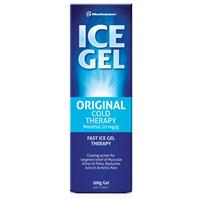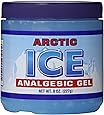Coldness can have numbing properties on the body.
I wonder if pain could be controlled by tricking that part of the body so that the brain thinks its cold there?
Coldness can have numbing properties on the body.
I wonder if pain could be controlled by tricking that part of the body so that the brain thinks its cold there?
Tau.Neutrino said:
Coldness can have numbing properties on the body.I wonder if pain could be controlled by tricking that part of the body so that the brain thinks its cold there?
Hot and cold have been applied for such purposes for a very long time.
roughbarked said:
Tau.Neutrino said:
Coldness can have numbing properties on the body.I wonder if pain could be controlled by tricking that part of the body so that the brain thinks its cold there?
Hot and cold have been applied for such purposes for a very long time.
Yes. Which amuses me because BOTH hot and cold are used. Both can’t be right. I find that cold increases pain. In pain research, pain tends to be applied by immersing a particular part of the body such as an arm in ice water. The longer in the cold ice water – the greater the amount of pain. I find that gentle warmth eases pain most effectively.
mollwollfumble said:
roughbarked said:
Tau.Neutrino said:
Coldness can have numbing properties on the body.I wonder if pain could be controlled by tricking that part of the body so that the brain thinks its cold there?
Hot and cold have been applied for such purposes for a very long time.
Yes. Which amuses me because BOTH hot and cold are used. Both can’t be right. I find that cold increases pain. In pain research, pain tends to be applied by immersing a particular part of the body such as an arm in ice water. The longer in the cold ice water – the greater the amount of pain. I find that gentle warmth eases pain most effectively.
Long term application has never been advocated. Other than in cryogenics.
> tricking that part of the body so that the brain thinks its cold there?
That’s what this is. I will not use it.


Ice is used for acute pain to relieve inflammation while heat is used after 48 hours to increase blood flow which assists healing.
For long term pain management such as after car accidents or chronic illness, a range of techniques are used including meditation and medication.
I understand stimulation of nerve endings can be effective e.g. phantom pain from an amputation. Gate theory refers to having a nice feeling to overcome the pain e.g. using massage. The brain would rather focus on the nice rather than pain, and the theory says the brain can be trained to focus on nice in the long-term. I recall some research focusing on overriding pain in the spinal cord rather than peripheral nerves.
The efficacy of ice application for analgesia, largely due to reductions in nerve conduction velocity is well-documented and supported by reasonable evidence base.
I’ve been wondering lately if sugar is an analgesic.
Or chocolate?
mollwollfumble said:
I’ve been wondering lately if sugar is an analgesic.
Or chocolate?
Excessive sugar supposedly causes inflamation
mollwollfumble said:
I’ve been wondering lately if sugar is an analgesic.
Or chocolate?
it is
mollwollfumble said:
I’ve been wondering lately if sugar is an analgesic.
Or chocolate?
It helps the medicine go down.
mollwollfumble said:
roughbarked said:
Tau.Neutrino said:
Coldness can have numbing properties on the body.I wonder if pain could be controlled by tricking that part of the body so that the brain thinks its cold there?
Hot and cold have been applied for such purposes for a very long time.
Yes. Which amuses me because BOTH hot and cold are used. Both can’t be right.
They are. As DA has stated, cold is used to reduce inflammation and swelling. It can also be used for numbing an area temporarily.
Heat can be used to relax muscles.
Both heat and cold can be used together for some muscular problems. I think this tightens then loosens the muscles, with the muscles loosening moreso than with heat alone.
Similarly, one of the methods I have used with my neck problem is to push my chin into my hand using the muscle which is stiff/sore/spasm-ing, then hold this for 30 seconds. When released, the muscle often relaxes and the pain is gone.
mollwollfumble said:
I’ve been wondering lately if sugar is an analgesic.
Or chocolate?
Sugar, sucrose, is used in infants as an analgesic.
http://www.rch.org.au/rchcpg/hospital_clinical_guideline_index/Sucrose_oral_for_procedural_pain_management_in_infants/
mollwollfumble said:
roughbarked said:
Tau.Neutrino said:
Coldness can have numbing properties on the body.I wonder if pain could be controlled by tricking that part of the body so that the brain thinks its cold there?
Hot and cold have been applied for such purposes for a very long time.
Yes. Which amuses me because BOTH hot and cold are used. Both can’t be right.
It’s so cute when physicists try biology.
poikilotherm said:
mollwollfumble said:
roughbarked said:Hot and cold have been applied for such purposes for a very long time.
Yes. Which amuses me because BOTH hot and cold are used. Both can’t be right.
It’s so cute when physicists try biology.
for example, both excessive heating and cooling can kill LIFE
impossible
poikilotherm said:
mollwollfumble said:
roughbarked said:Hot and cold have been applied for such purposes for a very long time.
Yes. Which amuses me because BOTH hot and cold are used. Both can’t be right.
It’s so cute when physicists try biology.
In this case it’s elementary mathematics – dP/dT at ambient temperature must be either positive, negative or zero, where P is pain and T is temperature.
If positive then heat increases pain and cooling reduces pain. If negative (which is always true for me) then heat reduces pain and cooling increases pain. If zero then neither heating nor cooling changes the pain level.
It’s so cute when biologists fail to apply logic.
LOL
The healing power of laughter.
or laugh so hard your sides hurt
Or laugh your head off.
mollwollfumble said:
roughbarked said:
Tau.Neutrino said:
Coldness can have numbing properties on the body.I wonder if pain could be controlled by tricking that part of the body so that the brain thinks its cold there?
Hot and cold have been applied for such purposes for a very long time.
Yes. Which amuses me because BOTH hot and cold are used. Both can’t be right. I find that cold increases pain. In pain research, pain tends to be applied by immersing a particular part of the body such as an arm in ice water. The longer in the cold ice water – the greater the amount of pain. I find that gentle warmth eases pain most effectively.
Depends what is the cause of pain. burns for example need cool running water to remove heat from the surface and core layers hence running water as the burn is the source of pain.
Heat can alleviate pain by warming an area and stabilizing the temperature but cooling a bruised and swelling region can also be optimal for some forms of pain especially if there is bleeding (bruising) and ligaments swelling but you need elevation and compression as well. Muscle fibres tangle when an injury first occurs relaxing and the immobilization with ice packs settles down the injury and reduces the flow injury recovery period,
Reducing swelling around joints can reduce pain but ime bone on bone prefers warmth as the swelling of surrounding tissues possibly gives cushioning affects and increases bloood flow.
Pain can get stuck in a loop for chronic paing sufferers and sometimes pressing a separate part of the body help by distracting the brain’s response to pain to another region. This is why i believe acupuncture potentially works for some people by having two things happen breaking the pain message pathway with a disrupting pain eleswhere in the body or providing an exit pathway for the pain message along the pain message pathway.
mollwollfumble said:
roughbarked said:
Tau.Neutrino said:
Coldness can have numbing properties on the body.I wonder if pain could be controlled by tricking that part of the body so that the brain thinks its cold there?
Hot and cold have been applied for such purposes for a very long time.
Yes. Which amuses me because BOTH hot and cold are used. Both can’t be right. I find that cold increases pain. In pain research, pain tends to be applied by immersing a particular part of the body such as an arm in ice water. The longer in the cold ice water – the greater the amount of pain. I find that gentle warmth eases pain most effectively.
Depends what is the cause of pain. burns for example need cool running water to remove heat from the surface and core layers hence running water as the burn is the source of pain.
Heat can alleviate pain by warming an area and stabilizing the temperature but cooling a bruised and swelling region can also be optimal for some forms of pain especially if there is bleeding (bruising) and ligaments swelling but you need elevation and compression as well. Muscle fibres tangle when an injury first occurs relaxing and the immobilization with ice packs settles down the injury and reduces the flow injury recovery period,
Reducing swelling around joints can reduce pain but ime bone on bone prefers warmth as the swelling of surrounding tissues possibly gives cushioning affects and increases blood flow.
Pain can get stuck in a loop for chronic pain sufferers and sometimes pressing a separate part of the body help by distracting the brain’s response to pain to another region. This is why i believe acupuncture potentially works for some people by having two things happen breaking the pain message pathway with a disrupting pain eleswhere in the body or providing an exit pathway for the pain message along the pain message pathway.